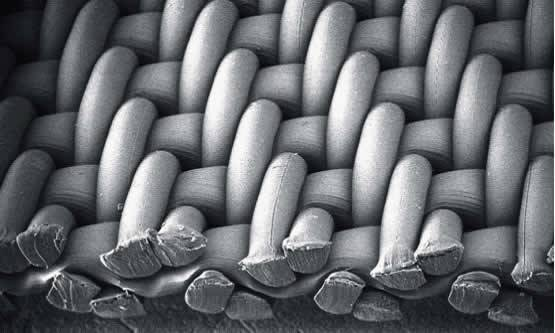Understanding Filter Cloth Yarn Types: Differences and Advantages
2024-05-31
Filter cloths play a crucial role in various industries, from water treatment to pharmaceuticals, by separating solids from liquids and gases. The efficiency of these cloths largely depends on the type of yarn used in their construction. This article explores the different types of yarns used in filter cloths and their respective advantages, helping customers make informed decision
1.Multifilament Yarn

Multifilament yarn is twisted together by monofilament yarns. The cloth fabricated by multifilament yarns has a smooth surface, high tensile strength, average particle collection efficiency and cake release.
Characteristics:
Softness: These yarns are generally softer and more flexible than monofilament yarns.
Increased Surface Area: The multiple strands offer a larger surface area for filtration.
Advantages:
Better Retention: The increased surface area allows for better particle retention, making them ideal for fine filtration.
Flexibility: The flexibility of multifilament yarns makes them suitable for applications requiring cloths to conform to irregular shapes.
2.Monofilament Yarn

Monofilament yarn is single and continuously extruded from synthetic resin. It has excellent cake release, resistance to blinding and low particle collection efficiency.
Characteristics:
Smooth Surface: The single strand has a smooth surface, reducing clogging and facilitating easy cleaning.
Durability: These yarns are robust and have high tensile strength, making them suitable for heavy-duty applications.
Advantages:
Easy Cleaning: The smooth surface allows for effective backwashing and cleaning, enhancing the longevity of the filter cloth.
Precision Filtration: Monofilament yarns provide consistent pore sizes, ensuring precise filtration.
3.Staple (spun) yarn

Staple yarns are fabricated of chopped filaments. These short fibers have low tensile strength, a large surface area. Staple fabric has poor cake release but excellent particle retention.
Characteristics:
Textured Surface: These yarns have a textured surface due to the individual fibers.
Absorbency: The structure of staple fiber yarns enhances their absorbent properties.
Advantages:
Enhanced Filtration Efficiency: The textured surface traps particles more effectively, improving filtration efficiency.
Cost-Effective: Staple fiber yarns are often more economical, offering a balance between performance and cost.
4.Choosing the Right Yarn Type
When selecting a filter cloth, the choice of yarn type depends on specific application needs. Here are some considerations:
Application Requirements
Heavy-Duty Filtration: For applications requiring durability and easy maintenance, monofilament yarns are ideal.
Fine Filtration: Multifilament yarns are suitable for fine filtration tasks due to their high retention capability.
Cost and Performance Balance: Staple fiber yarns offer a cost-effective solution for general filtration needs.
Operational Conditions
Chemical Compatibility: Consider the chemical resistance of the yarn material to ensure longevity and effectiveness.
Temperature and Pressure: The operating environment’s temperature and pressure should align with the yarn’s properties to maintain filtration efficiency.
Conclusion



